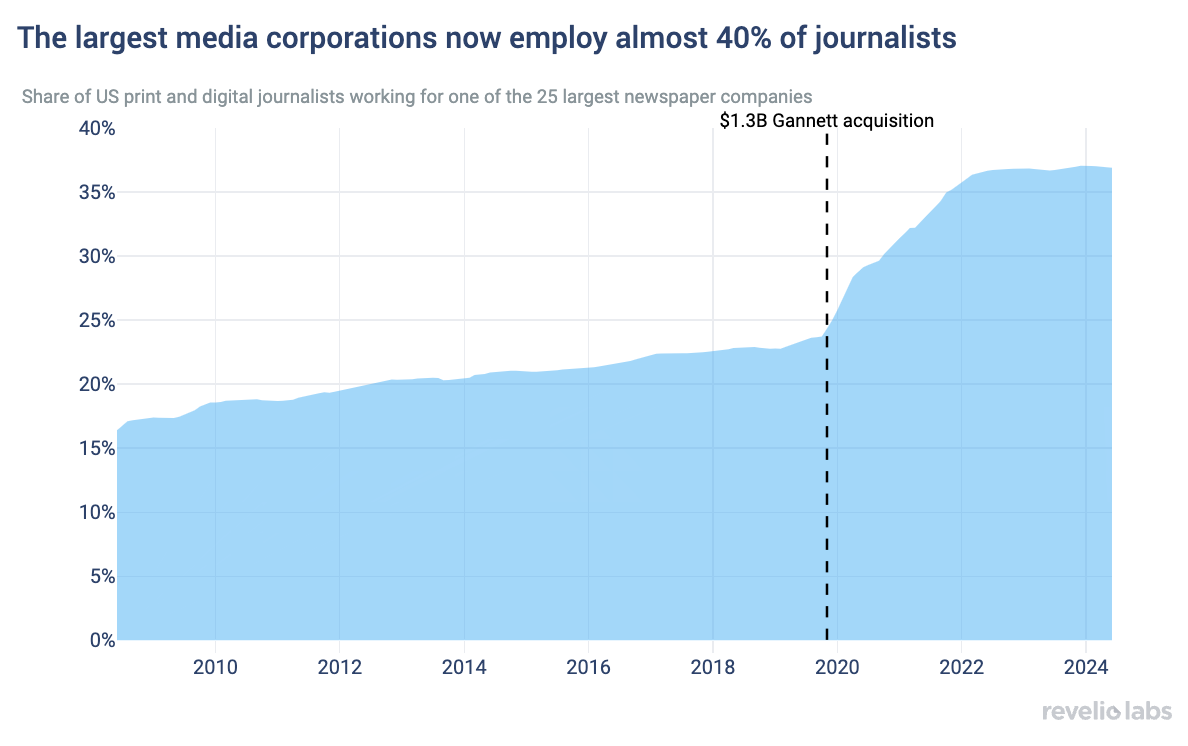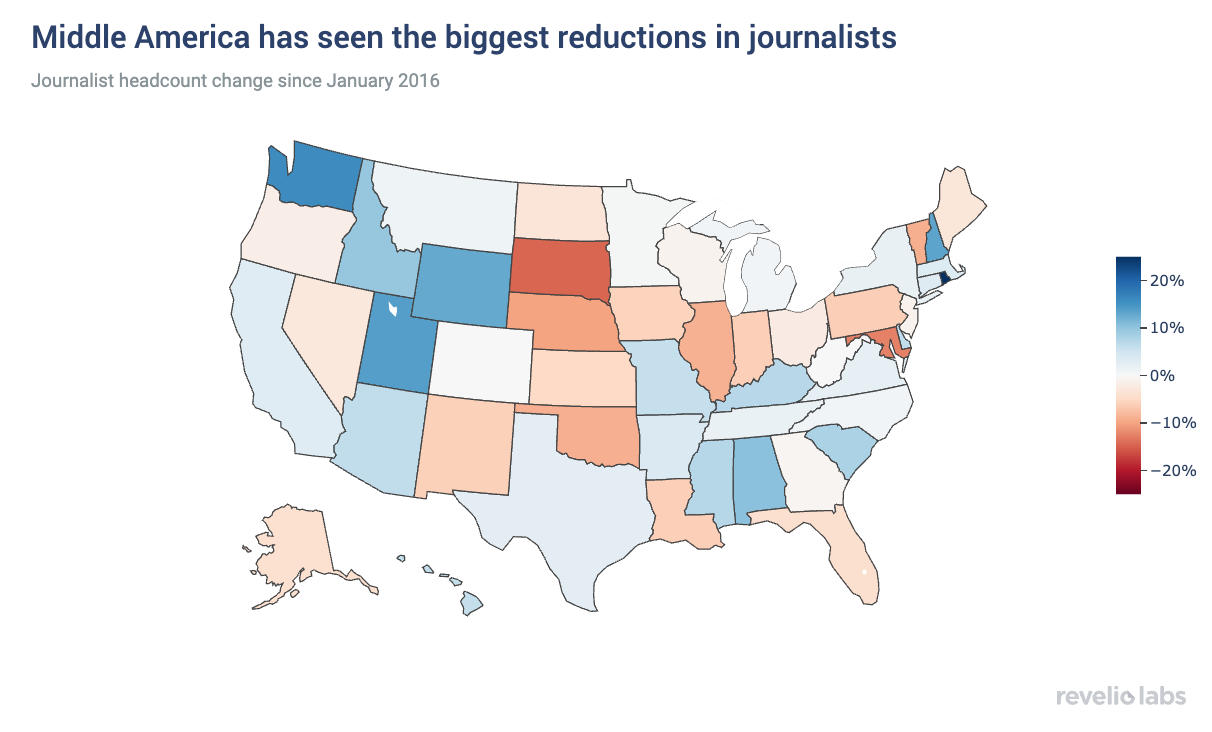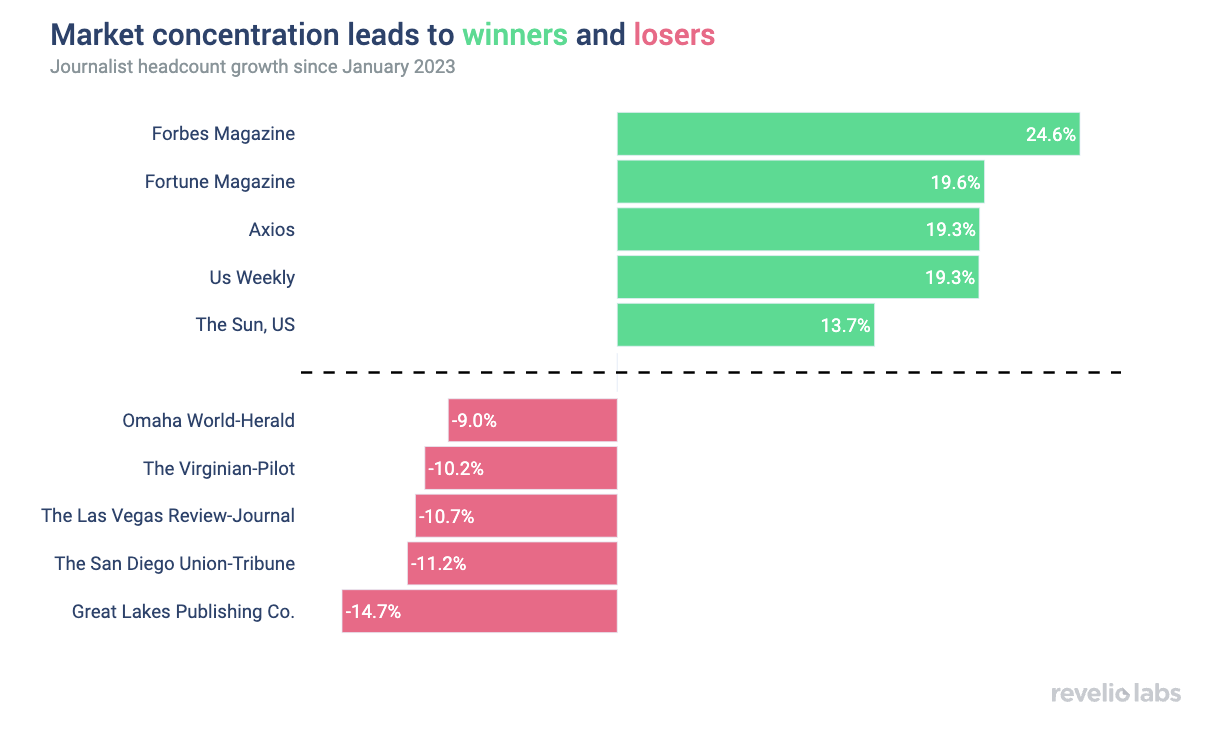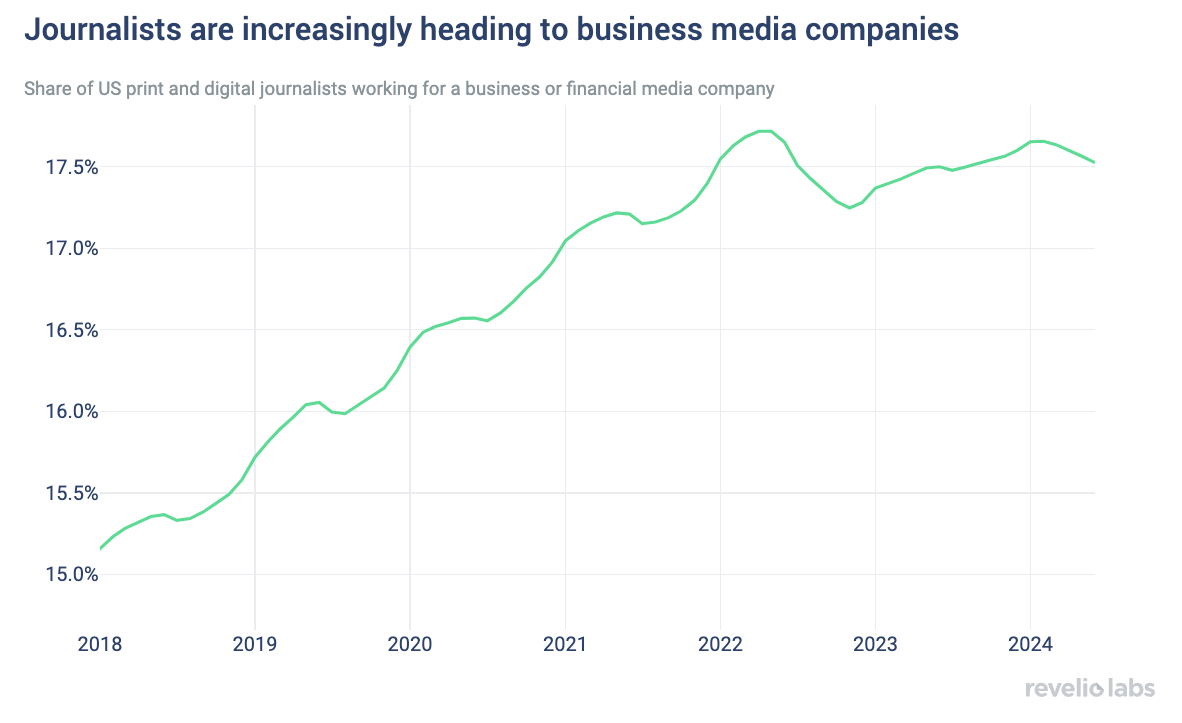No Local Paper and No Local Journalists: Media Consolidation Is Leaving Middle America Dry
Journalists are running out of employers

The news market has undergone significant consolidation over the past decade. The largest 25 newspaper companies now employ about 40% of all print and digital journalists in the US—up from just over 15% in 2008.
This leaves journalists with fewer employment opportunities overall. Middle America is particularly impacted by declining numbers of journalists.
Media consolidation results in less newspaper variety. Fewer journalists work for local newspapers. Instead, an increasing share of journalists work for financial and business publications.
The newspaper business has been going through a rough patch for years, with dwindling subscription numbers and ever-decreasing print editions. In the last year, The LA Times, Vice Media, and The Athletic were among the publications laying off a sizable number of journalists. Between the takeoff of generative AI models and declining readership, journalists have it far from easy these days. The newspaper market often gets measured in terms of editions, readership, and revenue. But what about its workforce—in particular journalists and reporters?
The gradual increase in the concentration of media ownership, with larger conglomerates owning increasing shares of the total market and smaller publications disappearing, has been ongoing for decades. The 2019 acquisition of Gannett by New Media Investment Group for $1.4 billion has especially accelerated the process. Our workforce intelligence data shows that while the 25 largest print news companies employed just over 15% of the industry's journalists in 2008, this number has risen to a staggering 38% in recent years. New Media, Murdoch’s News Corp and NYT employ the largest shares of journalists in the US.


Greater media consolidation and the disappearance of smaller local newspapers mean there are fewer employers journalists can ultimately work for. While the overall number of journalists has remained stable, important shifts affect journalists, reporters, and editors across the country. We see in our workforce intelligence data that South Dakota, Nebraska, and Oklahoma are among the states that are seeing the biggest declines in numbers of journalists, turning these locations into so-called "News Deserts"—places with no or very limited access to reliable local news sources. Fewer reporters and newspapers will invariably impact the quality of reporting and information, which may be particularly worrying in light of the upcoming election.


Consolidation in the media market particularly hits small local newspapers that are bought up by media giants and often do not survive. When looking at the news outlets with the largest gains and losses in numbers of journalists and reporters, we find that business and financial media, as well as other national publications, tend to be increasing in size, while local newspapers are losing out on journalists. Forbes Magazine, Fortune, Axios, and the US edition of The Sun are all among the publications with the biggest increases, while Great Lakes Publishing, The San Diego Union-Tribune, and the Las Vegas Review-Journal have seen some of the biggest decreases—testament to the decline of local newspapers.


This trend of expanding business and national publications and shrinking local media has been ongoing for years. Our data shows that the share of US print and digital journalists working at business and financial media publications has steadily increased over the six years, rising from 15 to 17.5%. This shift in the makeup of the journalism workforce is worrying when it comes to investigative journalism covering a broad set of topics that go beyond the scope of business publications. The absence of reporting on local news, including local and state politics, not only limits the flow of reliable information about local happenings but endangers social cohesion and makes political organization or grassroots movements difficult.



